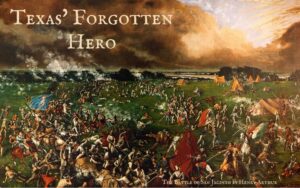
Where the Texas Hill Country and the South Texas Plains meet, the peoples of many cultures have also met since time beyond memory.
The first people to live along the banks of the river that flows there called themselves the Payaya people. They called the river Yanaguana–“the clear water.”
On June 13, 1691 the first Spanish governor of Tejas, Domingo Terán de los Rios, camped with Father Damian Mazanet on the shore of that same river. Since June 13th is the feast day of Saint Anthony of Padua, they called the river and the land around it San Antonio.
It was another quarter century before any type of permanent settlement was built where El Camino Real crossed the San Antonio River, but on May 1, 1718 Mission San Antonio de Valero–the Alamo–was established along with a presidio (a fort) to protect the mission and a villita (a little village) where the soldiers and their families lived.



